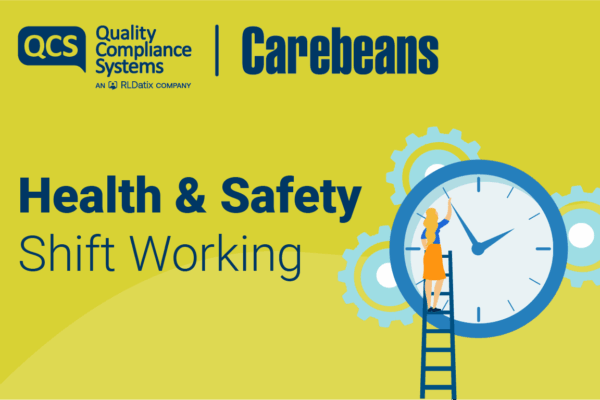Download our monthly Health and Safety review for April 2022 on ‘Reduce Stress in the Workplace’ by our partner, Napthens here
DOWNLOAD NOW
Alternatively, read it here:
April was stress awareness month, according to the Health and Safety Executive (HSE) 12.8 million working days were lost due to work related stress in 2018/19. This equated to an average of 21.2 days lost per case. If you are a residential care homeowner or an organisation within the care sector, the well-being of your employees is essential to both their physical health and mental health. It is prudent to note that whilst pressures outside of work can affect mental health and wellbeing, an employer should take reasonably practicable steps to control the factors within work that may affect the health of employees.
You can do this by promoting a good, supportive working environment and a culture of openness, where employees concerned about their well-being can access appropriate support. The definition of work-related stress used by the HSE is “the adverse reaction to excessive pressure”. Stress is personal and different people respond to pressure in different ways.
Factors that can cause stress are:
- Demands – unable to cope with the demands of the job
- Control – unable to control the way they carry out their work
- Support – don’t receive enough information and support
- Relationships – having trouble with relationships at work, or are being bullied
- Role – don’t fully understand their roles and responsibilities
- Change – not engaged when the business is undergoing change
It is prudent to note that there is no specific legislation which regulates stress in the workplace. However, the prevention of stress is included in the general duty of an employer to their employees under the following:
- The Health and Safety at Work etc Act 1974
- The Management of Health and Safety at Work Regulations 1999
- The Equality Act 2010
Also in civil law, an employer owes a duty of care to individual employees in the course of their employment.
It can be difficult to identify stress in others, as employees may want to keep their symptoms hidden.
There may be signs of stress in teams if you start to notice:
- Arguments
- Higher staff turnover
- More reports of stress
- More sickness absence
- Decreased performance
- More complaints and grievances
There may be signs of stress in employees, if you notice a change in the way in which someone acts, such as:
- Arguments
- Higher staff turnover
- More reports of stress
- More sickness absence
- Decreased performance
- More complaints and grievances
So how can you as an employer reduce the levels of stress in the workplace? Employee assistance programmes can act as a reactive control measure. Preventive control measures such as reducing stressors from the workplace can help to reduce or eliminate stress in the workplace.
Some potential methods which may help to reduce stress in the workplace can include:
- Undertake and regularly review stress assessments and implement their recommendations
- Support those experiencing stressful situations
- Ensure staff have access to a confidential counselling service or helpline
- Offer training and development opportunities
- Maintain good communications with employees
- Monitor and review workloads
- Manage poor performance and attendance to prevent a burden on other employees
- Ensure employees are not working excessive or unreasonable hours
- Ensure that bullying and harassment are not tolerated
Before you can implement the controls, you will need to identify the stress factors within your organisation. An audit or survey can assist to help you identify these.
The appropriate measures that you identify and implement to control the risk of stress-related ill health arising form your work activities must be documented in your stress risk assessment and communicated to all employees.
Further information and resources
You can find further assistance and guidance on this on the HSE website.
The HSE Stress Management Standards includes questions that can be used in a stress audit questionnaire – https://www.hse.gov.uk/stress/assets/docs/indicatortool.pdf
The HSE also has a tools and templates section on their website, which contains other useful reference documentation in relation to workplace stress – https://www.hse.gov.uk/stress/standards/downloads.htm






